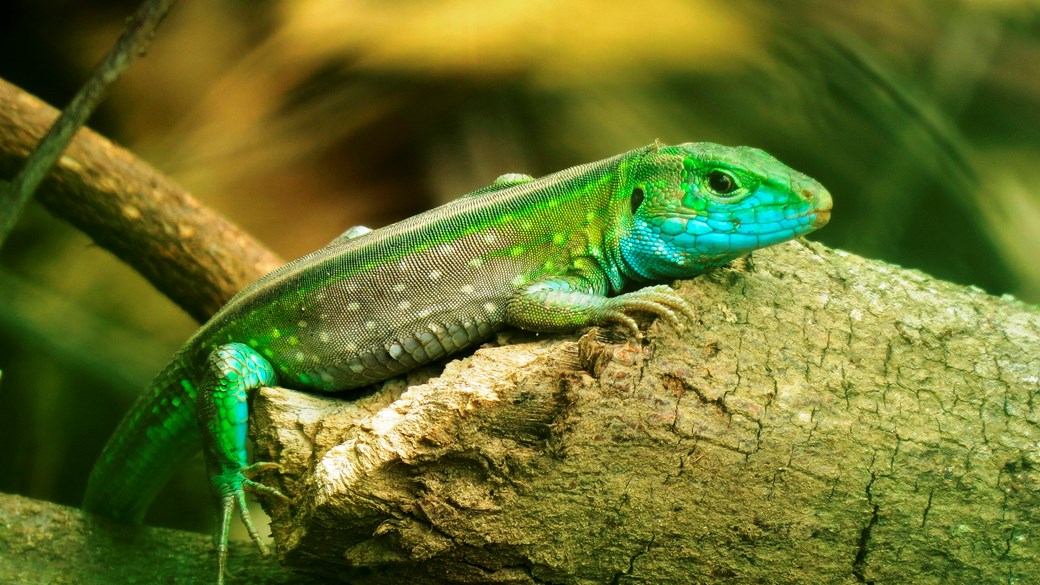
Cryptosporidium And Your Reptile
Cryptosporidia are a type of protozoa – a microscopic, single-celled parasite – which live in the intestines and can have devastating consequences.
Cryptosporidium (often called ‘crypto’ for short) are microscopic parasites that can inhabit the intestines and lead to the development of watery diarrhoea.
More about Cryptosporidium
There are two species of cryptosporidium found in our reptiles, C. serpentis, which is found mainly in snakes, and C. saurophilum, which is found mainly in lizards. Snakes are especially vulnerable to cryptosporidium infection, as the infection targets the lining of the stomach and can cause dangerous levels of bleeding and can often lead to death. In lizards the infection affects the intestines much more, and it is the reduction in the uptake of nutrients that causes the clinical signs.
Cryptosporidium can live its entire lifecycle within one reptile, and this means that reptiles can re-infect themselves. This means that even in reptile collections with a single or few reptiles, parasite levels can rise very rapidly.
Your reptile can catch cryptosporidium from several sources:
- Faecal contamination directly from another infected reptile
- On contaminated equipment, such as water and food bowls, as well as hands!
- By re-infecting themselves, which increases their own parasite levels
It can be difficult to diagnose a cryptosporidium infection in a reptile, especially in lizards as the signs may be more generalised. Many reptiles are also asymptomatic (have no signs of infection) – in these cases, cryptosporidium can remain quiet and hidden in the body and may only cause clinical signs if the reptile is under stress, or is otherwise unwell.
Signs of cryptosporidiosis in reptiles can include:
- Going off food or regurgitating food
- Change in faeces, perhaps with diarrhoea
- Weight loss
- Lack of energy
- Death in severe cases.
If your reptile is experiencing any of these signs then make an appointment with your local exotics vet as soon as possible.
If you think your reptile might have a cryptosporidium infection, the best thing to do is to go to your vet. They can do a full physical examination, and check your reptile over from nose to tail, especially as diarrhoea can have many causes!
A major difficulty with cryptosporidium is that it can be very difficult to diagnose. Often cryptosporidium is not picked up by faecal testing under a microscope and more complex tests looking for parasite DNA need to be done. Even this is not 100%, as the test will only work if the parasites are in the faeces to be found. As cryptosporidium can hide in the body, and may only be found in the faeces intermittently, if the parasite is not currently there a ‘false negative’ result can be achieved. The only certain way to diagnose the parasite is on post mortem microscopic examination, which is by no means ideal, although more sophisticated testing methods are being developed.
A second difficulty with cryptosporidium is that there are no treatments that are 100% effective. Sadly, many affected reptiles are already very unwell by the time they are at the vets, and may be past help. The best management plan for your reptile will be developed by your vet and you after diagnosis.
The two cryptosporidium species that infect reptiles are not infectious to humans. C. parvum, however, which does infect humans, can be seen in mice and rats, so care should be taken if you feed these to your reptile.
If you think you may have been exposed to cryptosporidium, and are concerned, always contact your doctor for advice.
You can’t stop your reptile being exposed to cryptosporidium, but there are some top tips to reduce the risk of cryptosporidium:
- Quarantine – It is important, especially if you have multiple reptiles, to reduce the risk of cryptosporidium being able to spread between animals. Isolation of new animals will allow monitoring to help identify carriers of diseases before they meet your current population. Getting a faecal sample for your vet during this time for testing can help you get a good picture of your reptile’s health. Quarantine of new reptiles should be for at least 90 days.
- New friends – If you want to get a new reptile, try and get them from a reliable source as this will reduce the risk of them coming to you already infected.
- Cleaning – Although cryptosporidium can be a very tough cookie, intensive cleaning regimes will hugely reduce the risk of cryptosporidium occurring in your reptiles as well as being part of gold standard care.
- What’s mine is mine – Keep separate food and water bowls, as well as enclosure/vivarium furniture for each environment and don’t switch them between reptiles without thorough disinfection.
- Keeping calm – Many reptiles can carry dormant cryptosporidium, which then flares up when they are stressed or sick. Keeping your stock numbers low and your reptiles happy will help prevent these flare-ups from occurring.
- Euthanasia – This can be very difficult, but as cryptosporidium cannot be treated, reptiles who are diagnosed who are part of large collections should be removed from your collection. As they are often very sick, humane euthanasia may be the best way to manage this. Quarantine can work if this can be managed safely, and is a viable option for single pets or small collections.
- Monitor – if you see your reptile has diarrhoea, get them in to see a vet. There are many things that can cause diarrhoea, and getting to the root of the problem will help you get the right action fast.
